Why you can trust Tom's Hardware
Our HDR benchmarking uses Portrait Displays’ Calman software. To learn about our HDR testing, see our breakdown of how we test PC monitors.
The 3D G9 supports HDR10 content with an automatic switchover. You can choose between static or active tone mapping and all image adjustments are available. You also get field dimming to increase dynamic range.
HDR Brightness and Contrast
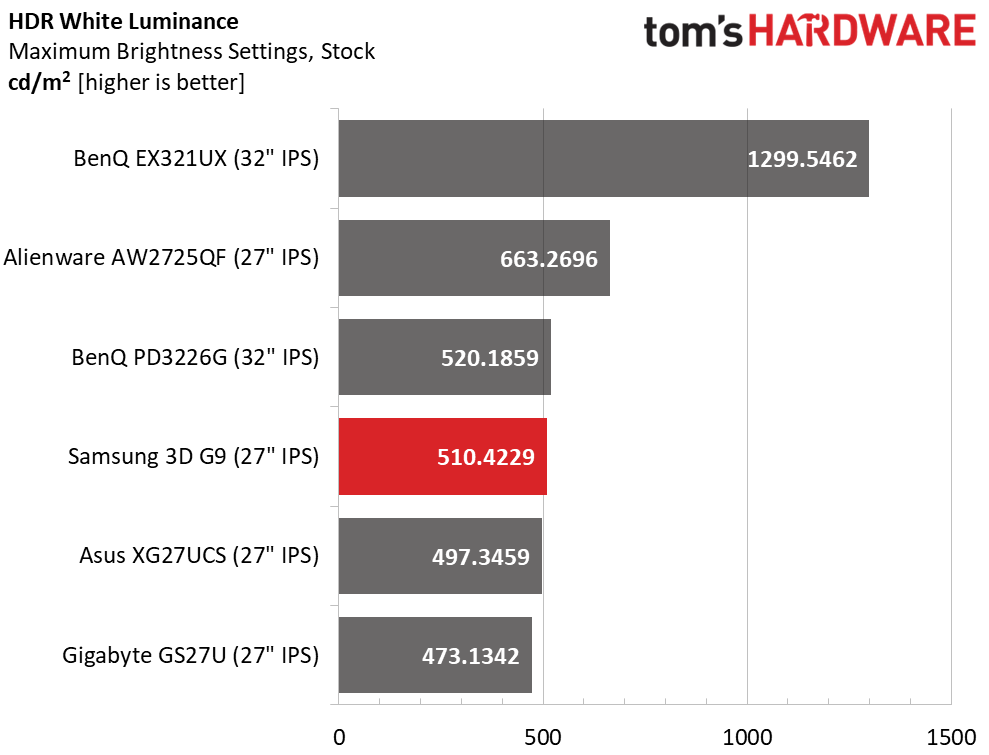
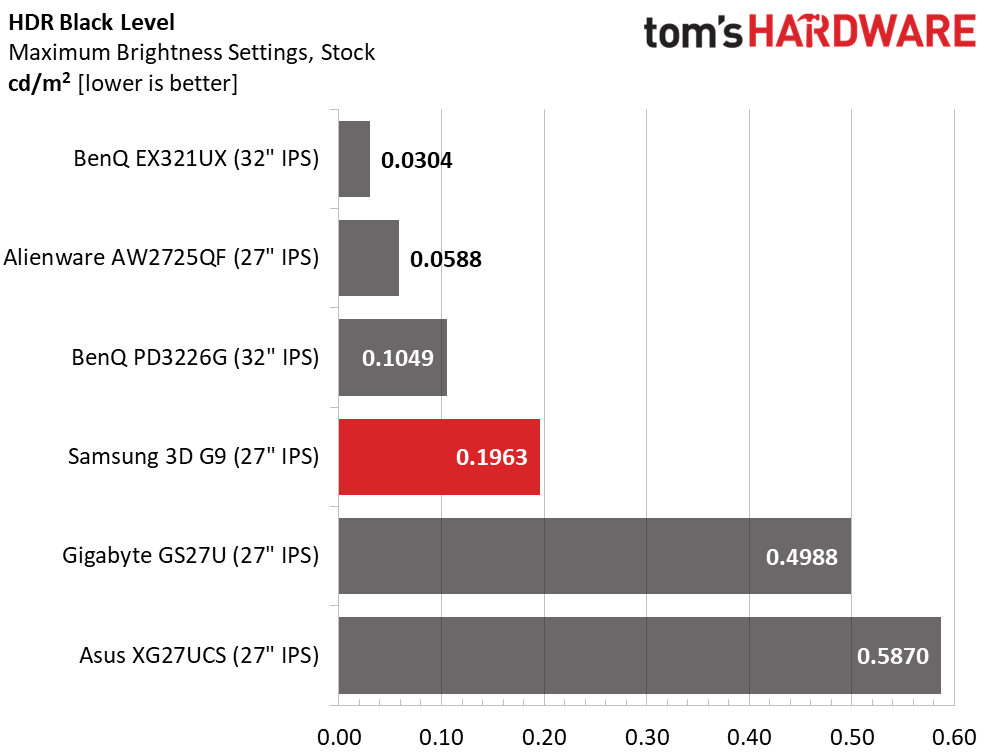
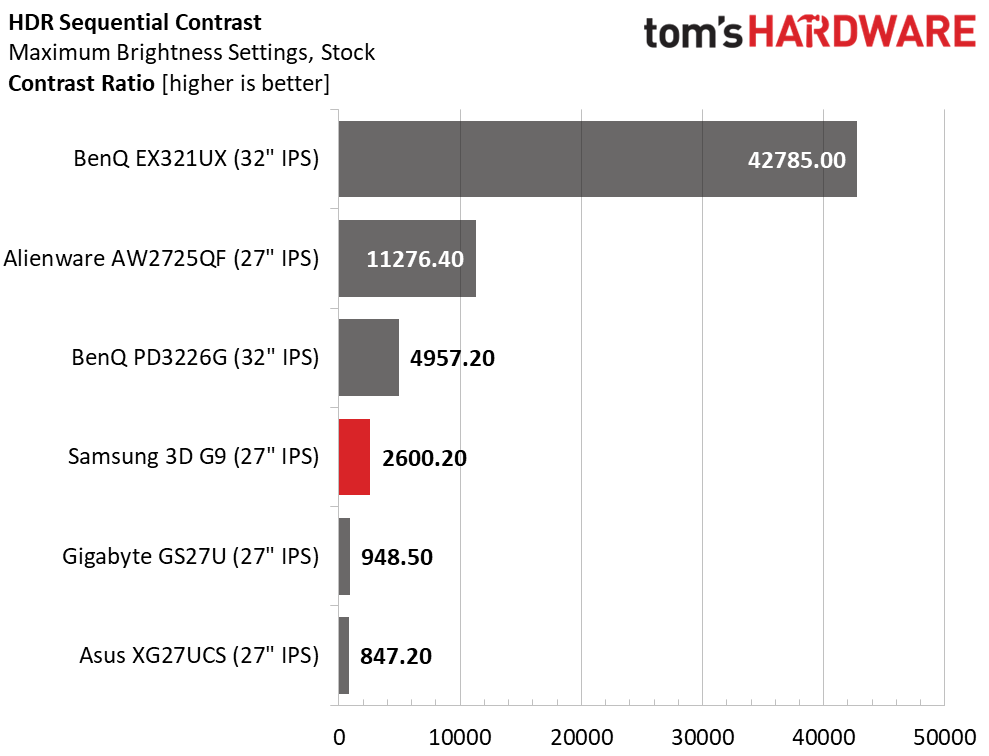
I ran the HDR tests with dimming on its High setting. There is no downside to this, so I recommend using the option full-time. It increases the brightness of a 25% window pattern to 510 nits and raises the contrast ratio to 2,600.2:1 with lower black levels. The 3D G9 doesn’t have the range of the Mini LED EX321UX but manages to hold its own over the Gigabyte and Asus screens, which have no dynamic contrast available. This is very good performance.
Grayscale, EOTF and Color
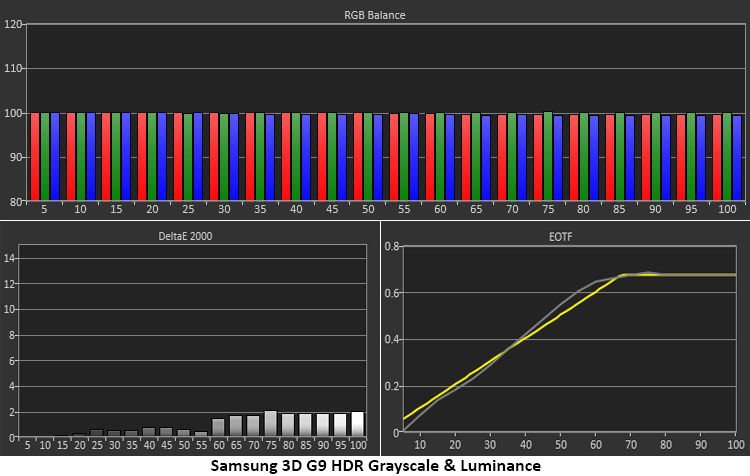
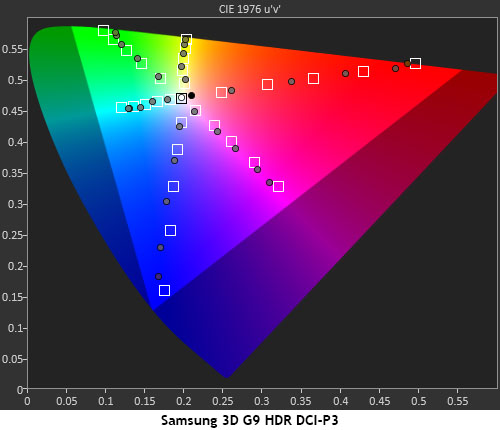
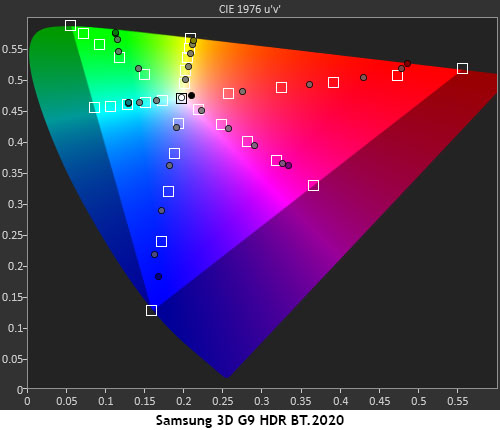
I did not need the 3D G9’s RGB sliders in HDR mode as it measured spot-on from the get-go. There are no visible grayscale errors and the EOTF tracks close to the reference. Mid tones go slightly light until the tone-map transition point at 65%. I ran this test using active tone mapping; kudos to Samsung for getting the tuning right. This means all detail present in the original content will be fully rendered regardless of the embedded metadata’s peak luminance value.
The HDR color tests show that the 3D G9 uses its full gamut potential with a healthy dose of oversaturation at the inner points. This gives a nice boost to HDR content making it more vivid and lifelike. Hue tracking is excellent with no visible issues to report. In the BT.2020 test, inner points are again oversaturated with coverage topping out at 83% red, 65% green and 90% blue. This is typical performance for non-Quantum Dot IPS monitors.
Test Takeaway: The 3D G9 renders very color-accurate HDR and adds value with its dynamic tone mapping. That’s something very few monitors have, and it noticeably elevates HDR10 content quality. My only wish is for full array local dimming rather than the field option that is included. It’s forgivable because the main attraction here is glasses-free 3D but if you want better HDR, there are less expensive Mini LED and OLED monitors available.
MORE: Best Gaming Monitors
Get Tom's Hardware's best news and in-depth reviews, straight to your inbox.
MORE: How We Test PC Monitors
MORE: How to Buy a PC Monitor

Christian Eberle is a Contributing Editor for Tom's Hardware US. He's a veteran reviewer of A/V equipment, specializing in monitors. Christian began his obsession with tech when he built his first PC in 1991, a 286 running DOS 3.0 at a blazing 12MHz. In 2006, he undertook training from the Imaging Science Foundation in video calibration and testing and thus started a passion for precise imaging that persists to this day. He is also a professional musician with a degree from the New England Conservatory as a classical bassoonist which he used to good effect as a performer with the West Point Army Band from 1987 to 2013. He enjoys watching movies and listening to high-end audio in his custom-built home theater and can be seen riding trails near his home on a race-ready ICE VTX recumbent trike. Christian enjoys the endless summer in Florida where he lives with his wife and Chihuahua and plays with orchestras around the state.
-
Fox Tread33 June 17, 2025 - I've purchased "cutting edge" devices in the past. Back in the 1970's I purchased very expensive Quadraphonic Stereo equipment and within months it was killed by less expensive surround sound stereo systems. A few decades later, I saw a controller that had haptic feedback and a unique design at a Tech show in New York City. I bought one... The demo disc that came with the device showed everything it could do. However, just like the Logitech "Force Feedback" joystick I purchased. No game developers designed any games or programs that gave functionality to those devices. It all depends on whether there are programs and games designed to use these devices. Samsung 3D monitor, great, but how many games will be designed to be used with it. In my opinion, there has to be an industry wide desire to advance any of these technologies. Otherwise, an individual company producing a niche device will never sell to a lot of people, and those who buy it. Will experience the same "early adopter" disappointment that I've experienced and mentioned here.Reply
